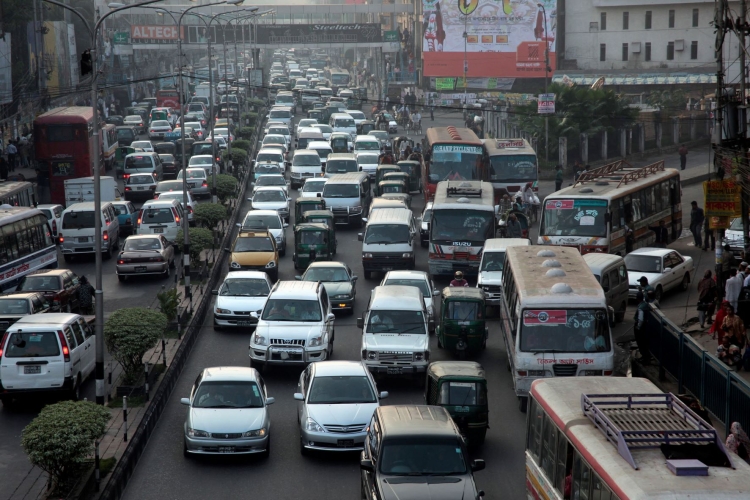
South Asia is home to 9 of the world’s 10 cities with the worst air pollution, and Dhaka is one of them. Air pollution is responsible for about 20 percent of the total premature deaths in Bangladesh. A new World Bank report shows that there are economically feasible, cost-effective solutions to achieve clean air in the region, but this requires countries to coordinate policies and investments.
Striving for Clean Air: Air Pollution and Public Health in South Asia, presented today in Dhaka, says concentrations of fine particulate matter such as soot and small dust (PM2.5) in some of the region’s most densely populated and poor areas are up to 20 times higher than WHO standard (5 µg/mᶾ). In South Asia, it causes an estimated 2 million premature deaths each year and incurs significant economic costs. Exposure to such extreme air pollution has impacts ranging from stunting and reduced cognitive development in children, to respiratory infections and chronic and debilitating diseases. This drives up healthcare costs, lowers a country’s productive capacity, and leads to lost days worked.
“Air pollution creates a serious threat to public health and has major consequences on economic growth,” said Abdoulaye Seck, World Bank Country Director for Bangladesh and Bhutan.“Evidence shows that with commitment, the right actions, and policies, it is possible to tackle air pollution. Bangladesh has already taken steps to improve air quality management, including the approval of the Air Pollution Control Rules. Along with strong national actions, transboundary solutions will be important to curb air pollution. Through analytical work and new investments, the World Bank is helping Bangladesh reduce air pollution.”
Air pollution travels long distances, crossing national boundaries—and gets trapped in large “airsheds” that are shaped by climatology and geography. The report identifies six major airsheds in South Asia where spatial interdependence in air quality is high. Bangladesh, India, Nepal, and Pakistan, share a common airshed that spans the Indo Gangetic Plain. Particulate matter in each airshed comes from various sources and locations, for example, in many cities, such as Dhaka, Kathmandu, and Colombo, only one-third of the air pollution originates within the city. Recognizing the transboundary nature of air pollution, four South Asian nations—Bangladesh, India, Nepal and Pakistan—for the first time joined together to draw up the Kathmandu Roadmap for improving air quality in the Indo-Gangetic Plain and Himalayan Foothills.
“Air pollution is not limited to a city, state, or national boundaries- it is transboundary in nature,” said Cecile Fruman, World Bank Director for Regional Integration for South Asia.“South Asian Countries in the same airshed—common geographical areas that share the same air quality—can reduce the alarming level of air pollution only if they take a coordinated approach. By working together countries can get results better, faster and cheaper.”
Bangladesh and a few other South Asian countries have adopted policies to help improve air quality. But, along with taking action at the district and country level, it is also urgent that coordinated transboundary actions are taken with the neighboring countries. The report shows that current policy measures focused on powerplants, large factories and transportation will only be partially successful in reducing PM2.5 concentrations across South Asia even if fully implemented. To achieve greater progress, the focus of policymakers should expand into other sectors, particularly small manufacturing, agriculture, residential cooking, and waste management.
The report analyzes four scenarios to reduce air pollution with varying degrees of policy implementation and cooperation among countries. The most cost-effective scenario, which calls for full coordination between airsheds, would cut the average exposure of PM2.5 in South Asia to 30 µg/m³ at a cost of $278 million per µg/mᶾ of reduced exposure, and save more than 750,000 lives annually.